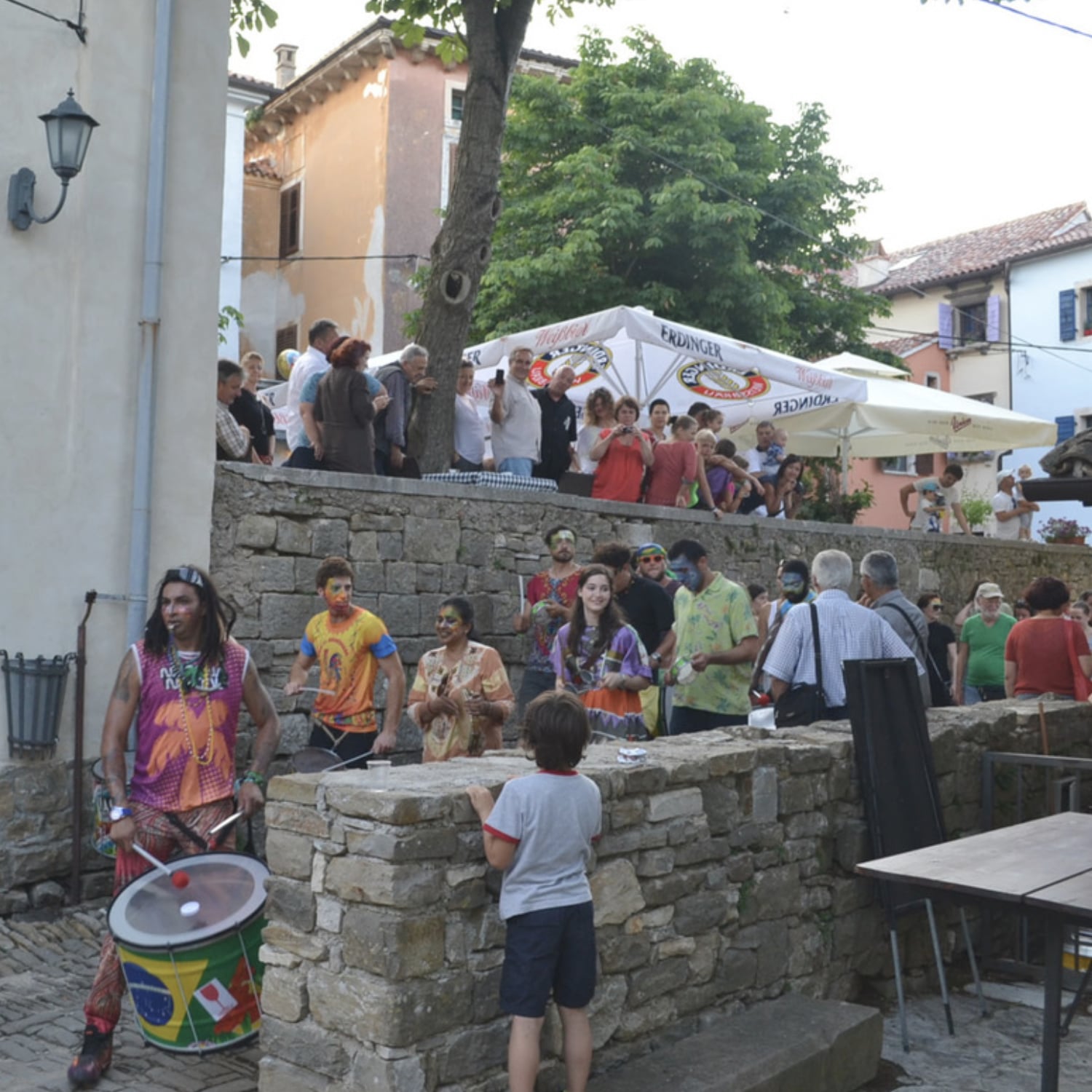History of Grožnjan-Grisignana
During the Austrian rule the Groznjan area flourished. Building of the Parenzana railroad in 1902 enhanced development of trade and agriculture. Wine, olive oil, eggs and other produce were sold in Koper and Trieste. According to the 1910 census, the town of Groznjan had 1,658, and the municipal area 4,028 inhabitants. Groznjan had a doctor, post office, school, lawyer, notary public, oil- processing plant, bakery, groceries and clothing stores, two butcher’s, several inns and various trade shops (shoemakers, blacksmiths, tailors, carpenters, etc.). The fall of the Austrian Empire, the subsequent Italian rule and the Great Depression had its consequences. In the 1920s people started to emigrate, looking for work in Trieste and overseas.
During the rule of the Kingdom of Italy Groznjan attained waterworks, the area was electrified, and the Mirna river valley was reclaimed. After the fall of Italian fascist regime in 1943, the popular uprising spread, and Croatian, Slovenian and Italian anti-fascists liberated the area from the Germans in 1945. In September 1943 the People’s Liberation Committee proclaimed that Istria would unite with the Croatian homeland. The newly-founded Provincial People’s Liberation Committee of Istria confirmed the decision; ZAVNOH and AVNOJ followed. In 1947 the Peace Treaty with Italy was signed. Istria was divided into two parts, the Yugoslav one and the Free Territory of Trieste, which was divided into Zone A, controlled by the US Army, and Zone B, controlled by the Yugoslav Army. Groznjan become a part of Zone B. On October 5, 1954 the London Memorandum was signed;
In 1965 Groznjan was declared a TOWN OF ARTISTS. Artists started to revive the town. Members of associations of artists from Croatia and Slovenia moved in and saved the town from further decline. Sculptor Aleksandar Rukavina organized and synchronized various activities. Artists transformed old, abandoned houses into an art colony which has since become a place of residence and work for many of them.
Zone A was assigned to Italy, and Zone B to the People’s Federal Republic of Yugoslavia. In 1975 the Osimo Agreement defined the border between Italy and Yugoslavia, whereas Zone B irrevocably became a part of Yugoslavia. The London Memorandum provided a possibility of opting out which – together with nationalization, confiscation, forced cooperatives, poor agrarian policy (instead of traditional crops like grapes, olives and fruits, farmers had to grow wheat), severing of traditional ties with Koper and Trieste, limitation of religious freedoms, forced school reform, and various other restrictions and fear-mongering – contributed, along with strong Italian propaganda, to a mass exodus. By April 1956 two thirds of the population emigrated from the area, and in Groznjan itself only a few families remained.
Official languages are Croatian and Italian; many speak Slovenian as well. In Groznjan this is a fact of life.
Some of Groznjan’s empty houses were taken over by people from the surrounding area. In 1965, when the Town of Arts was founded, some houses were given to artists from Croatia, Slovenia and Vojvodina, and some were assigned to the Cultural Centre of the International Music Youth Federation in 1969. Thus Groznjan, once a town of tradesmen, has become a town of artists. Now during the summer months sounds of magical music echo among the renovated houses – with loggias and tiny arches, cylindrical chimneys and architraves with coats of arms and inscribed dates, decorated with wrought iron – in cobblestone streets and in little squares, so that Groznjan will not be forgotten.





